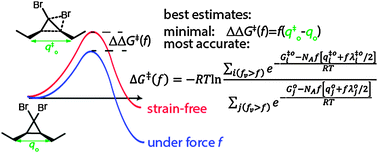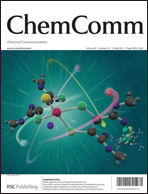Comparison of the predictive performance of the Bell–Evans, Taylor-expansion and statistical-mechanics models of mechanochemistry†‡
Abstract
We analyse the capacity of several models to extrapolate the activation free energies of isomerization of

- This article is part of the themed collection: Emerging Investigators 2013

 Please wait while we load your content...
Please wait while we load your content...